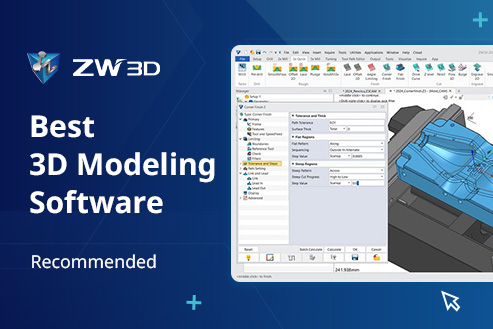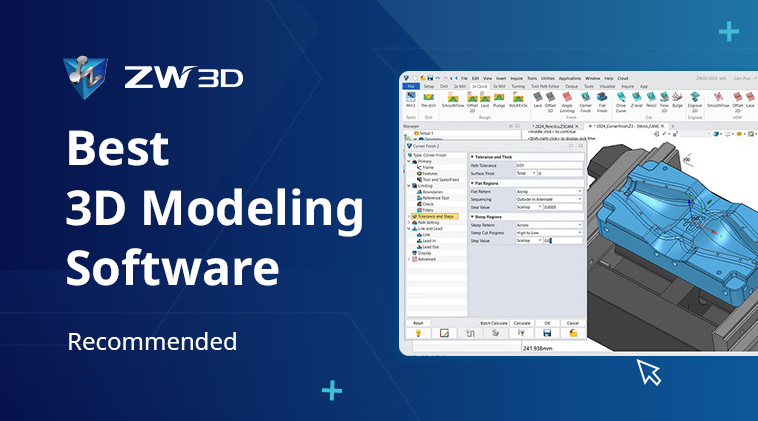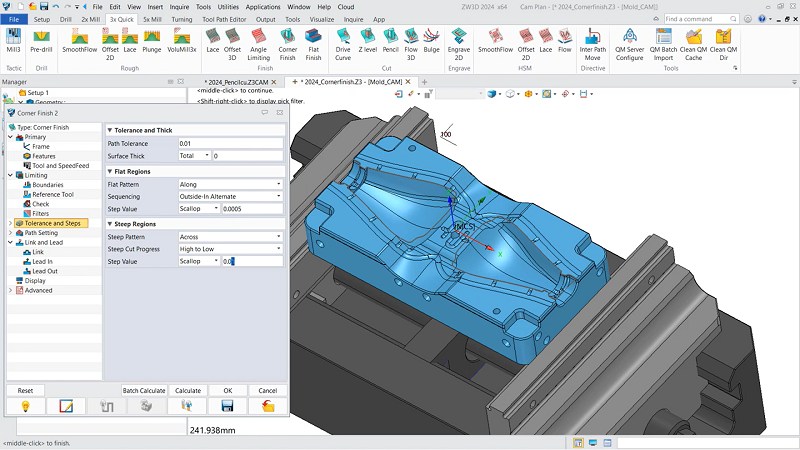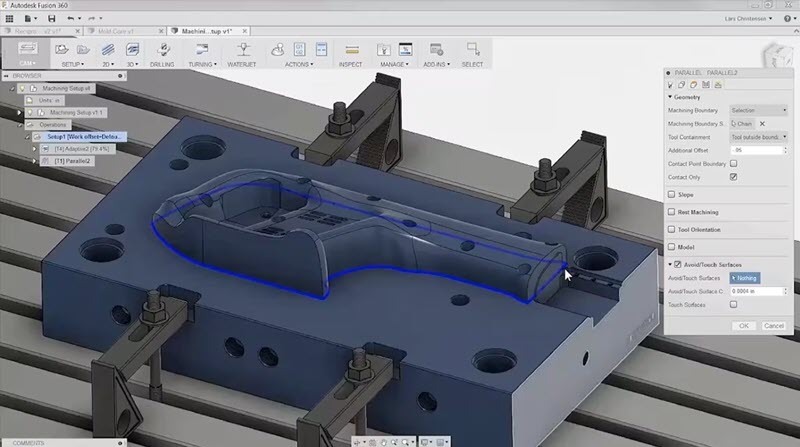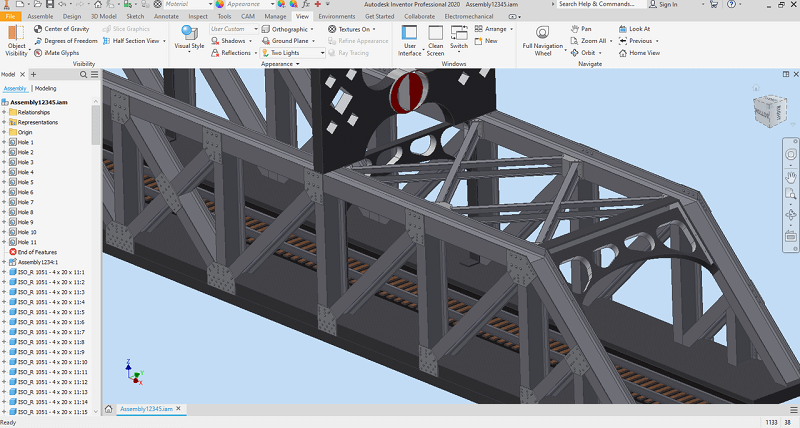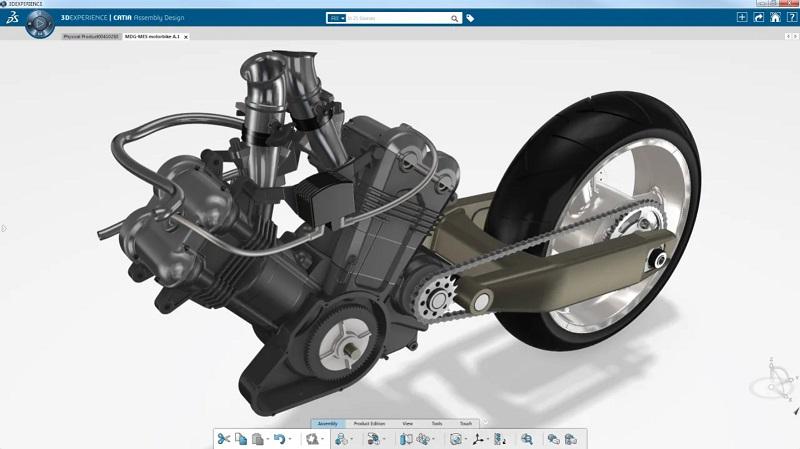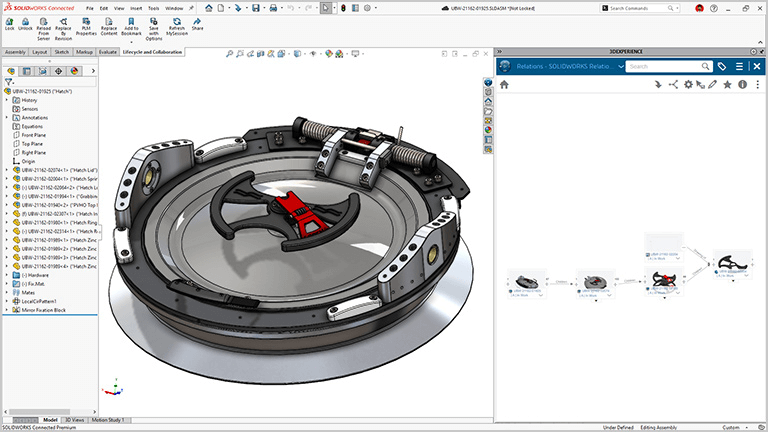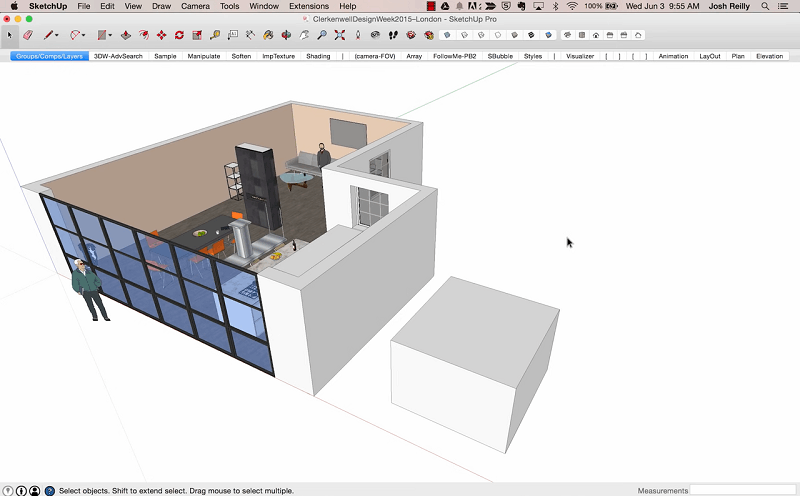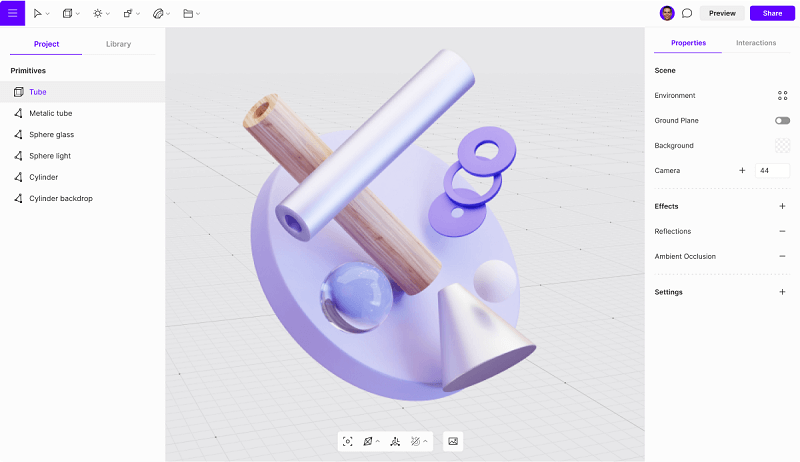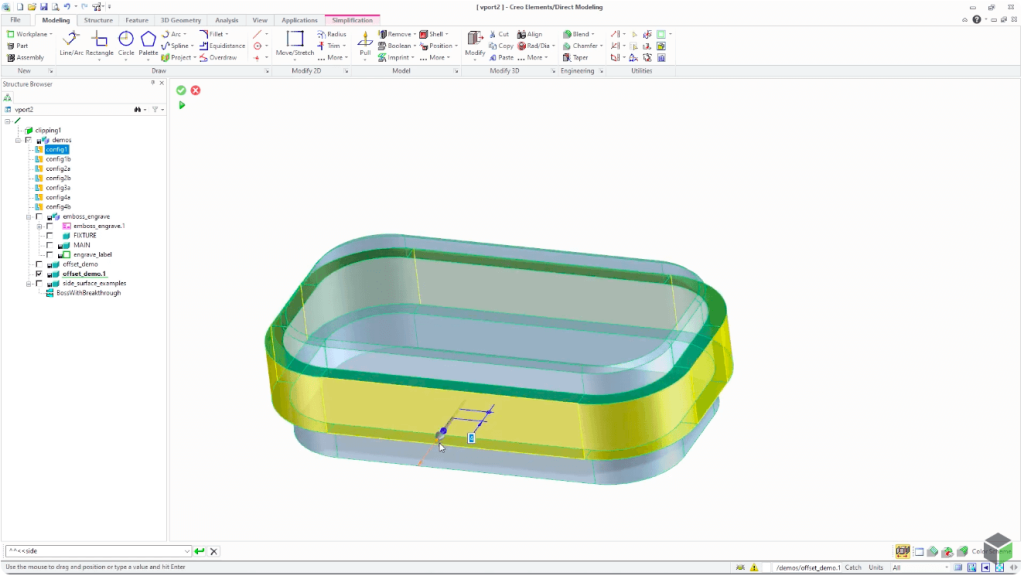In today’s industrial design and manufacturing landscape, 3D CAD modeling software plays a vital role. It allows designers to transform ideas into precise 3D digital models, significantly improving design efficiency, accuracy, and collaboration. Whether in mechanical engineering, architecture, product development, or even animation and game design, 3D CAD tools have become essential. As technology advances, a wide range of 3D modeling software is now available, offering increasingly powerful features to meet the needs of both beginners and experienced professionals.
This article will explore 8 of the best 3D CAD modeling software, catering to different fields, budgets, and needs, to help you find the perfect option for you.
Contents
- Key Factors When Choosing 3D CAD Modeling Software
- Top 1. ZW3D
- Top 2. Fusion
- Top 3. Inventor
- Top 4. CATIA
- Top 5. SolidWorks
- Top 6. SketchUp
- Top 7. Vectary
- Top 8. PTC Creo
- FAQs About 3D CAD Modeling Software
- Comparison and Suggestion
Key Factors When Choosing 3D CAD Modeling Software
There are many 3D CAD modeling software options available in the market today, each boasting unique features and strengths. If you are wondering how to select the right one, here are some key considerations to help you pick the best 3D modeling software for your needs:
- Ease of use: When it comes to selecting 3D modeling software, ease of use is a crucial factor to consider, particularly for beginners who are just starting to learn 3D modeling. Starting with one designed for your skill level will help you avoid a steep learning curve and keep you motivated as you learn.
- Modeling Capabilities: Modeling capabilities determine how efficiently and accurately you can create, modify, and manage 3D designs. The right tools, like parametric modeling or surface editing, can ensure the software matches your project complexity and workflow needs.
- Compatibility: Consider whether the software is compatible with common file formats, CAD software, renderers, and other tools to ensure you can exchange data and collaborate smoothly.
- Performance & Stability: Choosing 3D modeling software with good performance and high stability can greatly improve your work efficiency and reduce time waste caused by unexpected issues.
- Cost: software for 3D modeling comes in a wide range of prices, from free to thousands of dollars. Before making your choice, you need to consider your budget. For beginners, you can start with low-cost or free 3D modeling software.
- Technical Support & Community: Active technical support and community can help you solve problems encountered during learning and use promptly.
Top 1. ZW3D
When it comes to the best 3D CAD software, ZW3D can be what you need. This 3D modeling software is an all-in-one 3D CAD/CAE/CAM solution, suitable for both experienced professionals and beginners who want to learn further to explore the entire product development. It not only provides basic 2D design tools but has powerful 3D modeling and design features such as flexible parametric modeling, efficient direct editing, structural simulation, solid surface hybrid modeling, etc. This makes it an ideal option for various designs, including machinery, parts, vehicles, and more.
Additionally, it boasts an intuitive interface, making anyone quickly get started, even if you are a beginner. Even better, this 3D CAD software offers a 30-day free trial to let you enjoy all its features before purchasing a lifetime license starting at $2,500. If you are looking for professional but beginner-friendly 3D modeling software, consider ZW3D.
Pros
- Serve as an all-in-one solution for 3D CAD, CAE, and CAM.
- Boast a user-friendly interface and extensive tutorials, making it approachable for beginners.
- Offer a comprehensive set of tools for 3D modeling, editing, assembly, and analysis for diverse design needs.
- Work seamlessly with various file formats, CAD software, and API for smooth workflow.
- Provide flexible licensing options, including a 30-day free trial and one-time purchase licenses starting at $2,500.
- Deliver smooth and reliable performance.
Cons
- Only work on Windows computers currently.
| Note: The ZW3D 2026 version is now available. Building upon the 2025 version, it offers enhanced productivity with more powerful capabilities, including 2D/3D associative updates, smarter assembly tools, and expanded features for general machinery design. If you think it’s a good fit, feel free to download and try it out for free from the download center. |
Top 2. Fusion
Fusion is a cloud-based software created by Autodesk, which is integrated with CAD/CAM/CAE to design and simulate machinery, parts, products, and more. This powerful 3D modeling software provides users with a wide range of 3D modeling tools, including solid modeling, surface modeling, parametric modeling, freeform modeling, and more, enabling them to create complex geometry and parts quickly. Additionally, it also supports simulation tools like structural analysis, thermal analysis, and fluid dynamics analysis, which allows users to conduct comprehensive evaluations of their designs to optimize product performance and reliability.
For beginners, Fusion also provides a wealth of learning resources, which includes official tutorials, online courses, and community forums. These resources can help beginners quickly learn the basic operations and functions of Fusion. Even better, the software offers different price ranges to suit different user budgets, starting with a free trial, followed by $85/month, $680/year, and $2040/3 years.
Pros
- Easy to use 3D modeling software.
- Provide hyper-realistic rendering for 3D modeling.
- Integrate with Autodesk ecosystem for smooth data exchange and active community support.
- Support commonly used file formats and cloud integration for streamlined workflow.
- Work on Windows and Mac.
Cons
- Occasionally crashes.
- No support for keyboard control customization.
- Frequent updating features confuse users.
Top 3. Inventor
Autodesk Inventor is a professional-grade 3D CAD software specifically designed for complex mechanical and engineering projects. Compared to Fusion, Inventor caters more to experienced users who require creating intricate models, performing advanced analyses, or preparing for manufacturing.
One of its key features is large-scale assembly design. Users can create and manage relationships between multiple parts in a single file, facilitating performing operations such as collision detection and motion simulation. Moreover, this 3D modeling software also integrates analysis tools, empowering users to conduct simulations for stress, heat transfer, movement, and other factors, ultimately optimizing product performance and quality. If your projects involve complex parts and assemblies, Inventor can be your choice. However, it comes with a higher price, including subscription options like $315 per month, $2,500 annually, and $7,500 for a three-year term.
Pros
- Specialize in generating professional-grade mechanical and engineering designs.
- Work well with CAD software, BIM, and various file formats for seamless collaboration.
- Create model data that is easily re-configurable.
- Integrate with Autodesk ecosystem with an active community.
Cons
- Occasional bugs and crashes.
- Complex interface for beginners to get started.
- High memory demanding.
Top 4. CATIA
CATIA is one of the best 3D modeling software options for architecture, engineering, and machinery, suitable for Windows and UNIX. It is designed for CAD, CAM, CAE, and PLM. Originally developed by Dassault Systèmes in 1982, this 3D modeling software has earned a reputation for stability and reliability through years of refinement.
For those who are new to 3D modeling, CATIA is an ideal option as it offers rich online learning resources, an active user community, and responsive customer support to ensure that any issues are resolved promptly. Additionally, CATIA offers events and e-seminars, providing a platform for users to connect and delve deeper into 3D modeling and design. However, it is important to note that subscription plans for CATIA can be costly and difficult for some users to afford.
Pros
- Provide robust 3D modeling and simulation tools.
- Offer a wealth of online training and tutorials for beginners to get started.
- Boast an active community to get inspiration from others around the world.
- Stable and reliable performances.
Cons
- Require a steep learning curve.
- Offer a complex interface to handle 3D modeling projects.
- Expensive with subscription plans, including $361/quarterly(For new users only), $2,268/quarterly, and $7,560/year(2-month free trial included).
Top 5. SolidWorks
SolidWorks is a professional 3D CAD software widely used in mechanical engineering, product design, and manufacturing. It allows users to create detailed parametric 3D models, assemblies, and technical drawings. The software excels at simulating real-world behavior through built-in tools for stress analysis, motion studies, and thermal evaluation, making it an ideal solution for engineers who need both design and validation capabilities in one platform.
SolidWorks also offers seamless integration with CAM, PDM, and cloud collaboration tools, supporting efficient workflows from concept to production. However, SolidWorks is available only through subscription model, with the Standard version starting at around $2,820 per year.
Pros
- Advanced parametric modeling suitable for complex mechanical design.
- Integrated simulation tools for structural, motion, and thermal analysis.
- Strong support for file interoperability, including STEP, IGES, and DWG.
- Wide user base and robust learning resources, including certifications.
Cons
- High cost, even the Standard version starts at $2,820/year.
- Requires for powerful computer for smooth performance.
- Steep learning curve for beginners.
Read Also:
- 6 Best 3D Modeling Websites You Should Try in 2025
- 8 Best 3D Modeling Apps for Mobile Devices in 2025
Top 6. SketchUp
SketchUp is a widely used 3D modeling software that is commonly employed in furniture and architecture design. If you are a beginner, SketchUp can be the best easy 3D modeling software for you. Its interface is straightforward and user-friendly, making it easy to use even if you have no prior experience in 3D modeling.
Furthermore, SketchUp offers a vast online 3D model library, from which users can download a variety of prefabricated architectural elements, furniture, plants, and more to streamline the design process and enrich model details. Additionally, SketchUp provides four versions, including SketchUp Free, SketchUp Go ($119/year), SketchUp Pro ($349/year), and SketchUp Studio ($749/year), to cater to users’ level, budget, and requirements.
Pros
- Provide beginner-friendly free 3D modeling software with an intuitive interface.
- Offer a vast library of free 3D models and components to use.
- Boast an active community for extensive tutorials, plugins, and support.
- Work well with other popular CAD software and various files like DWG and DXF.
Cons
- Not ideal to handle complex 3D modeling projects.
- Lack of advanced features for 3D modeling.
Top 7. Vectary
If you are looking for robust 3D modeling software for product design, Vectary is the perfect solution. It aims to streamline the 3D design process by letting users effortlessly create high-quality 3D models, rendered images, and animations directly in your web browser, without any downloads or installations. New users can try its free 3D modeling software before purchasing to ensure it meets the requirements.
Vectary includes a vast library of free 3D scenes, models, and materials for drag-and-drop creation, accelerating your workflow. Additionally, it comes packed with a real-time rendering engine which provides instant previews of the model and effect during the design process, allowing users to adjust lighting, materials, and other parameters on the fly. However, as a relatively new software, Vectary may be less stable than other 3D modeling programs and lacks an active community that can help users troubleshoot issues.
Pros
- Provide easy-to-use free 3D modeling software.
- Web-based 3D modeling software with no installation.
- Offer high-quality 3D rendering, interactions, and animation in real time.
- Support real-time collaboration to streamline the workflow.
- Work well with CAD files.
Cons
- Highly rely on internet connection during the entire process.
- Offer relatively less stable performance.
- No support for exporting 3D models in the free version.
Top 8. PTC Creo
Creo is a versatile 3D CAD software developed by PTC, widely used in manufacturing and industrial design. It supports both parametric and direct modeling, giving users flexibility to design complex parts and assemblies efficiently. Creo is well-known for its strong integration with product lifecycle management (PLM) systems and advanced simulation capabilities that help engineers validate designs early.
Beyond modeling, Creo offers specialized tools for additive manufacturing, topology optimization, and augmented reality visualization, making it a comprehensive solution for modern product development. Pricing varies based on selected modules and license types, generally positioned at the higher end of the market.
Pros
- Flexible hybrid modeling combining parametric and direct editing.
- Advanced simulation and optimization tools integrated natively.
- Strong PLM integration supports collaboration and data management.
Cons
- Can be expensive, with subscription pricing varying by chosen licenses and modules.
- Steep learning curve for new users.
- Some industry-specific features are limited.
FAQs About 3D CAD Modeling Software
Which 3D Modeling Software Should I Start with?
If you are a beginner, it’s best to start with the best free 3D modeling software like SketchUp Free. Once you make progress and want to tackle more complex projects like machinery, parts, or vehicles, consider ZW3D. It offers advanced features that go beyond entry-level tools, making it suitable for these complex models.
Also, ZW3D is available for a one-time purchase starting at $2,500. This is more affordable than other paid 3D modeling software. However, if your budget is limited or you only need 3D modeling for a short time, then Fusion (for machinery, parts, and consumer product design) and Vectary (for product design) are both great options.
What Computer Specifications Are Needed to Run 3D Modeling Software?
3D modeling software relies on specific computer hardware to run smoothly and efficiently. Generally, more powerful software demands higher specs. For optimal performance, choose a multi-core processor like an Intel Core i5 or higher, or an AMD Ryzen processor. If you are planning to handle more complex modeling and rendering, ensure that your computer has at least 16GB of memory and a high-performance graphics card such as NVIDIA Quadro or AMD Radeon Pro series
Moreover, you should also make sure that your computer is up-to-date and meets the software’s requirements. Additionally, don’t forget to use a solid-state drive(SSD) for faster loading times and high-resolution monitors to display intricate details in complex 3D models.
Comparison and Suggestion
This article explores 8 of the best 3D modeling software options available, empowering designers, artists, and manufacturers to bring their creative 3D model ideas to life. To help you choose 3D modeling software, the following table breaks down the features to help you find the perfect fit for your needs.
| Pricing | Best for | Subtable for
|
Supported OS | 3D Rendering | Customizable | Performance | |
| ZW3D | 30-day free trial, one-time purchase at $2,500 | Beginners, Professionals | Mechanical, electronic, manufacturing industries, etc | Windows | High | Yes | Stable |
| Fusion | 30-day free trial, $85/month, $680/year, and $2040/3 years | Professionals
|
Transportation and consumer product industry | Windows & Mac | High | Yes | Less Stable |
| Inventor | $315/ month, $2,500/year, and $7,500/3 years | Professionals | Mechanical engineering | Windows | High | Yes | Less Stable |
| CATIA | $2,268/quarterly, and $7,560/year(2-month free trial included) | Professionals | Construction engineering industry | UNIX & Windows | High | Yes | Stable |
| SolidWorks | Subscription only: Standard from $2,820/year | Professionals | Mechanical, industrial design, manufacturing | Windows | High | Yes | Stable |
| SketchUp | Free version provided, subscription starts at $119/month | Beginners | Construction engineering industry | Windows & Mac | Moderate | Yes | Less Stable |
| Vectary | 30-day free trial, $19/year | Beginners, Professionals | Consumer product industry | All | Moderate | Yes | Less Stable |
| Creo | Subscription: from $3,040/year (Design Essentials); varies by module | Professionals, Enterprises | DComplex mechanical design, engineering, PLM workflows | Windows | High | Yes | Stable |
For beginners, you can start with free 3D modeling software such as SketchUp Free. However, if you need to create complex models, it is recommended that you use a more powerful paid option like ZW3D. For product design specifically, Vectary stands out with its streamlined workflow and features tailored to product creation. If you’re working in industrial design, tools like SolidWorks or Creo offer advanced modeling and simulation capabilities. No matter your skill level or project, there’s a 3D CAD modeling software to turn your ideas into reality.
